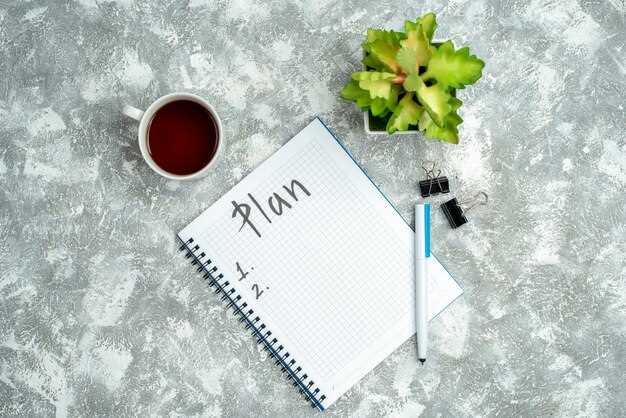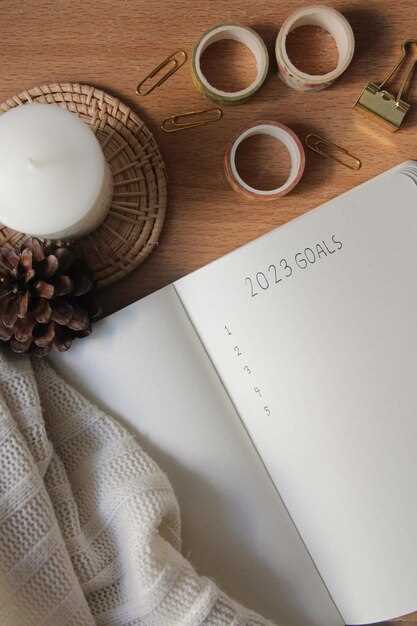Begin your monthly planner reset with a thorough decluttering session. Remove all outdated notes and miscellaneous papers, ensuring your planner is a clean slate for new ideas and objectives. Dedicate a couple of minutes to evaluate your binding or ring mechanism, as this step will prolong the lifespan of your planner. Organizing tools such as tabs and folders can be added at this point for better categorization.
Color coding is a simple yet powerful way to enhance the clarity of your planner. Assign a specific color to each category, such as personal, professional, and leisure, to make it visually appealing and easy to scan. Invest in a set of colored pens or highlighters that complement the design of your planner. Additionally, creatively integrate stickers and icon stamps for a touch of personalization and inspiration, turning mundane tasks into exciting opportunities.
Incorporate a reflection portion at the start of each month. A few bulleted thoughts on previous achievements, key learnings, and areas for improvement provide a concise yet impactful review. This retrospective step informs your monthly goal-setting, allowing for strategic adjustments and prioritization. To further personalize your planning experience, include motivational quotes or goals that resonate with your aspirations.
Designing a Vision Board for Your Monthly Goals

Gather images, quotes, and symbols that resonate with the goals you plan to achieve this month. Use a combination of personal photos, magazine cutouts, or digital prints to ensure your board reflects your aspirations accurately. Emphasize clarity by having a central theme based on what you want each month to represent in your planner.
Arrange your visuals on a corkboard or any blank surface you prefer. This will allow you to freely pin and move elements as your priorities evolve. To foster an efficient workflow, categorize each goal into sections for professional, personal, and wellness objectives. This structure not only visualizes your goals but also organizes them for quick reference.
| Category | Examples |
|---|---|
| Professional | Certificate courses, networking events, performance milestones |
| Personal | Books to read, hobbies to explore, family time |
| Wellness | Exercise routines, mental health days, dietary plans |
Incorporate motivational words or phrases alongside the images to inspire action. Simple words like “Achieve,” “Grow,” or “Balance” serve as daily reminders of your focus. Update your vision board at the start of each month, reviewing what was accomplished and setting fresh objectives. This routine embeds motivation and clarity into your planning process, ensuring each month is a proactive step towards your ultimate goals.
How to Choose Inspirational Images and Quotes

Identify themes that resonate with your goals. Whether you aspire to embrace positivity or cultivate mindfulness, select images and quotes that align with your vision. Consider what speaks to your heart and adds meaning to your month ahead.
Ensure authenticity by choosing visuals and quotes that reflect genuine emotions. Avoid cliches or overused expressions by seeking out fresh perspectives. Websites like Pinterest or Unsplash offer a diverse range of creative imagery. For unique quotes, explore literary works or lesser-known thought leaders.
Pay attention to color schemes and aesthetics. Harmonize them with your planner’s style for a cohesive look. The right combination of colors can evoke specific emotions and make your planner visually appealing.
Rotate content monthly to keep your planner fresh and engaging. This not only prevents monotony but also allows you to adapt to changing goals and experiences. Keeping things dynamic can boost motivation and creativity.
Integrating Personal and Professional Goals
Align your ambitions by dedicating separate sections in your planner for personal and professional objectives. This visual separation clarifies priorities and facilitates balanced progress.
Use color coding to distinctly mark tasks related to each category. This method aids quick recognition and helps maintain a dynamic overview of your daily agenda.
Periodically check your goals against a quarterly review. Assess achievements and recalibrate your strategies to ensure that your personal goals harmonize with your career advancements.
Set SMART goals that bridge your personal interests and professional pursuits. For instance, if learning a new language supports both your personal aspirations and career growth, integrate it into both sections.
Devote a few minutes each week to reflect on your progress. This habit encourages continuous alignment of your personal and professional paths by highlighting areas that require adjustment.
Finally, leverage technology to synchronize your planner with digital tools. Sync notifications about workshops, deadlines, and personal commitments across all devices to stay informed and organized.
Creating a Balanced Layout for Visualization
Utilize the power of color coding to categorize different tasks and deadlines in your planner. Assign specific colors to various aspects of your life, such as work, personal goals, and self-care activities. This technique enhances visibility and helps in quickly gauging where your time and energy are allocated.
Integrate well-defined sections into your planner, ensuring each area has a distinct purpose. Include spaces for daily to-dos, weekly priorities, and long-term projects. This structure creates a visual harmony, making it easier to transition between short and long-term planning.
Incorporate visual elements such as graphs or charts to track progress on goals. This not only breaks the monotony of text but also provides a clearer picture of your achievements. Visual representations can motivate and inspire consistent productivity by depicting your progress over time.
Ensure there’s room to breathe in your layout. Overcrowding your planner with too much information can lead to stress rather than organization. Use white space strategically, allowing your eyes to rest and your brain to process the information efficiently.
Reflect your unique style by customizing the planner with elements that resonate with you personally. Personal touches instill a sense of ownership and make the planner an extension of your personality, encouraging regular use and engagement.
Updating Your Vision Board to Reflect New Priorities
Begin by revisiting each image and text snippet on your current vision board. Ask yourself if they still mirror your current goals. If not, remove them to create space for new aspirations. This will help maintain a clear focus on what truly matters to you now.
Next, align your vision board with your upcoming goals. Pin or paste images and words that resonate with these priorities. Whether it’s a new career objective, a personal development target, or a health ambition, make sure each element speaks directly to what you aim to achieve in the coming months.
Incorporate tangible elements that you can relate to on a personal level–photos, quotes, or even objects that spark motivation. This personal touch ensures your vision board feels both relevant and inspiring, effectively serving its purpose as a motivational tool.
Regularly review and update your vision board as your priorities evolve. Setting a monthly reminder to assess your board can ensure that it continues to reflect your goals accurately. By doing so, you maintain a visual representation of your path forward, helping to cultivate focus and inspire action.
Revamping Your Planner with Creative Strategies

Integrate color coding to quickly differentiate tasks and priorities. Use distinct colors for personal, professional, and creative projects.
- Sticky Notes: Opt for vibrant sticky notes to highlight important dates or deadlines. This is not only visually appealing but also provides flexibility in moving tasks around as priorities change.
- Thematic Days: Dedicate specific days of the week to particular types of tasks. For instance, Monday can focus on meetings and planning, while Thursday is reserved for creative projects.
- Weekly Reflection: Allocate time at the end of each week to evaluate accomplishments and setbacks. Jot down thoughts or changes to improve the following week.
- Inspiration Pages: Create sections for creative brainstorming or inspirational quotes. This can fuel motivation when planner fatigue sets in.
- Stickers and Drawings: Employ stickers or doodle to make the planner more inviting and enjoyable to use. It encourages regular interaction, which is key to maintaining productivity.
Experiment with different layouts and planning systems, such as the bullet journal method, to discover what suits your workflow best. Personalizing your planner keeps it fresh and aligns it more closely with your goals.
Incorporating Color Coding for Better Organization
Designate specific colors for distinct areas of your life to enhance clarity and efficiency in your planner. Create a color code system and assign a unique color to each category, for example:
- Work: Use blue for meetings and deadlines to emphasize professionalism and reliability.
- Personal: Bright green can denote personal tasks and appointments, evoking a sense of growth and balance.
- Family: Opt for yellow to highlight family commitments and events, symbolizing happiness and warmth.
- Health: Choose red for workouts or medical appointments, capturing attention and urgency.
Implement a legend at the beginning of the planner to remember your chosen colors and their meanings. This visual guide ensures consistency and reduces decision fatigue when planning your month.
Utilize colored markers, stickers, or washi tapes for a tactile enhancement to your planner. These methods not only maintain organization but also add creativity, making planning sessions more enjoyable.
Review and adjust your color coding system regularly to match the shifts in your priorities and responsibilities. This adaptability will keep the system relevant and practical over time.
Personalizing Your Planner with DIY Elements
Dive into personalizing your planner by incorporating custom washi tape designs. Create unique patterns using watercolor paints or colored markers on blank washi tapes for a truly personalized touch. These tapes can be used to highlight important dates or section off parts of your planner, adding color and flair.
Another creative way to enhance your planner is by crafting your own bookmarks. Cut out cardstock in various shapes such as arrows, hearts, or tabs, and decorate with stickers, stamps, or doodles. Laminate these creations to ensure durability, and you’ll have personalized bookmarks that guide you through your planner effortlessly.
Stamps are another excellent DIY element. Carve simple designs on erasers using a linoleum cutter to make customized stamps. Use ink pads to transfer your designs onto the pages, creating consistent motifs or themes throughout your planner.
| DIY Element | Materials Needed | Suggested Usage |
|---|---|---|
| Custom Washi Tape | Blank washi tape, watercolor paints, markers | Highlight dates, section off areas |
| Bookmarks | Cardstock, stickers, stamps, laminating sheets | Mark pages or sections |
| Customized Stamps | Erasers, linoleum cutter, ink pads | Create motifs, decorate pages |
Engage your artistic side by creating planner stickers using printable sticker paper and an inkjet printer. Design these stickers on a computer or draw on paper before scanning and printing. Cut them out individually to suit your planner’s style and needs.
Don’t forget the power of hand lettering. Use brush pens to experiment with different fonts and styles for headings or special entries. This personal touch can bring elegance and personality, making your planner truly one-of-a-kind.
Setting Up Themed Sections to Boost Productivity
Maximize your planner’s potential by organizing themed sections that align with your goals and interests. Implement these ideas to create a personalized structure:
- Goal-Oriented Tasks: Dedicate a section to track daily, weekly, and monthly goals. Incorporate a task list under each objective to maintain focus and measure progress easily.
- Creative Brainstorming: Reserve a space for jotting down creative ideas, sketches, or solutions to problems. This encourages innovation and keeps your thoughts organized.
- Meeting Highlights: Summarize key points and action items from meetings in a dedicated section. It ensures you quickly access information when needed and maintain accountability.
- Health and Well-being: Allocate pages for tracking habits, meal plans, and workout routines. This section supports a balanced lifestyle, offering insights into your physical and mental health routines.
- Financial Planning: Monitor expenses, budgets, and financial goals to stay on top of your finances. Include charts or graphs to visualize your spending patterns and savings.
Experiment with colors, stickers, and headings to differentiate these sections and make your planner visually engaging. Regularly review and adjust these categories to match evolving priorities.
Scheduling Time Blocks for Creative Pursuits
Allocate specific hours each week dedicated solely to creative projects. This ensures you consistently nourish your creative spirit without distraction. Start by designating a set time, such as two hours twice a week, in your planner for activities like painting, writing, or crafting.
Organize these sessions by focusing on one creative goal at a time. Prioritize activities that excite you and provide fulfillment, allowing them to take precedence over less inspiring tasks. By doing so, you maintain motivation and reinforce the significance of creativity in your daily routine.
Consider dedicating different time blocks for varied creative endeavors. For example, reserve morning hours for brainstorming or writing, when your mind is fresh, and evening slots for more tactile activities like sketching or DIY projects, when unwinding can enhance creativity.
Incorporate flexibility in your schedule to accommodate spontaneous bursts of inspiration. You might sometimes swap a task block with a creative one, ensuring you seize those creative impulses the moment they strike.
Track your progress and achievements in these time blocks by jotting down notes or maintaining a simple log. This helps to monitor your creative journey and refine future scheduling for optimal productivity and enjoyment.
Q&A:

What is a monthly reset ritual, and why should I consider implementing it into my planner routine?
A monthly reset ritual is a series of activities designed to help you refresh and reorganize your planner at the beginning of each month. This practice allows you to reflect on the past month, set new priorities, and create a clear plan moving forward. Implementing such a routine can improve productivity, maintain organization, and ensure that your goals align with your current needs and aspirations.
Could you suggest some creative ideas for a monthly planner reset that keep it interesting and engaging?
To make your monthly planner reset engaging, consider incorporating art or doodles, using colorful stickers, or dedicating sections for various aspects of life, such as personal growth, health goals, or hobbies. You can also set themes for each month or incorporate journaling prompts to inspire self-reflection and creativity.
How can I ensure that I stick to my reset routine every month?
Consistency is key for any routine. Set a specific date at the beginning of each month to perform your reset. Consider creating a checklist of tasks that make up your reset ritual and check them off as you go. Integrating your reset ritual into an enjoyable activity, such as sipping your favorite tea or listening to a playlist, can also make it more appealing and thus easier to stick with.
What are some potential benefits of maintaining a monthly reset ritual with my planner?
Engaging in a monthly reset ritual can offer numerous benefits, such as increased clarity on long-term goals, a sense of accomplishment from completing prior tasks, and better preparedness for upcoming challenges. It encourages mindfulness and a proactive approach to time management, ultimately fostering a more balanced and fulfilling daily life.


